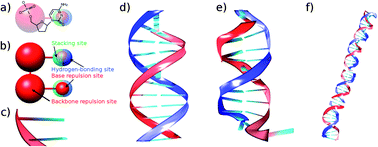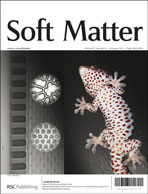Self-assembly of short DNA duplexes: from a coarse-grained model to experiments through a theoretical link
Abstract
Short blunt-ended DNA duplexes comprising 6 to 20 base pairs self-assemble into polydisperse semi-flexible chains due to hydrophobic stacking interactions between terminal base pairs. Above a critical concentration, which depends on temperature and duplex length, such chains order into liquid crystal phases. Here, we investigate the self-assembly of such double-helical duplexes with a combined numerical and theoretical approach. We simulate the bulk system employing the coarse-grained DNA model recently proposed by Ouldridge et al. [J. Chem. Phys., 2011, 134, 08501]. Then we evaluate the input quantities for the theoretical framework directly from the DNA model. The resulting parameter-free theoretical predictions provide an accurate description of the simulation results in the isotropic phase and theoretical values for the isotropic–nematic phase boundaries which are in line with experimental findings. In addition, the developed theoretical framework makes it possible to provide a route to estimate the stacking free energy.


 Please wait while we load your content...
Please wait while we load your content...